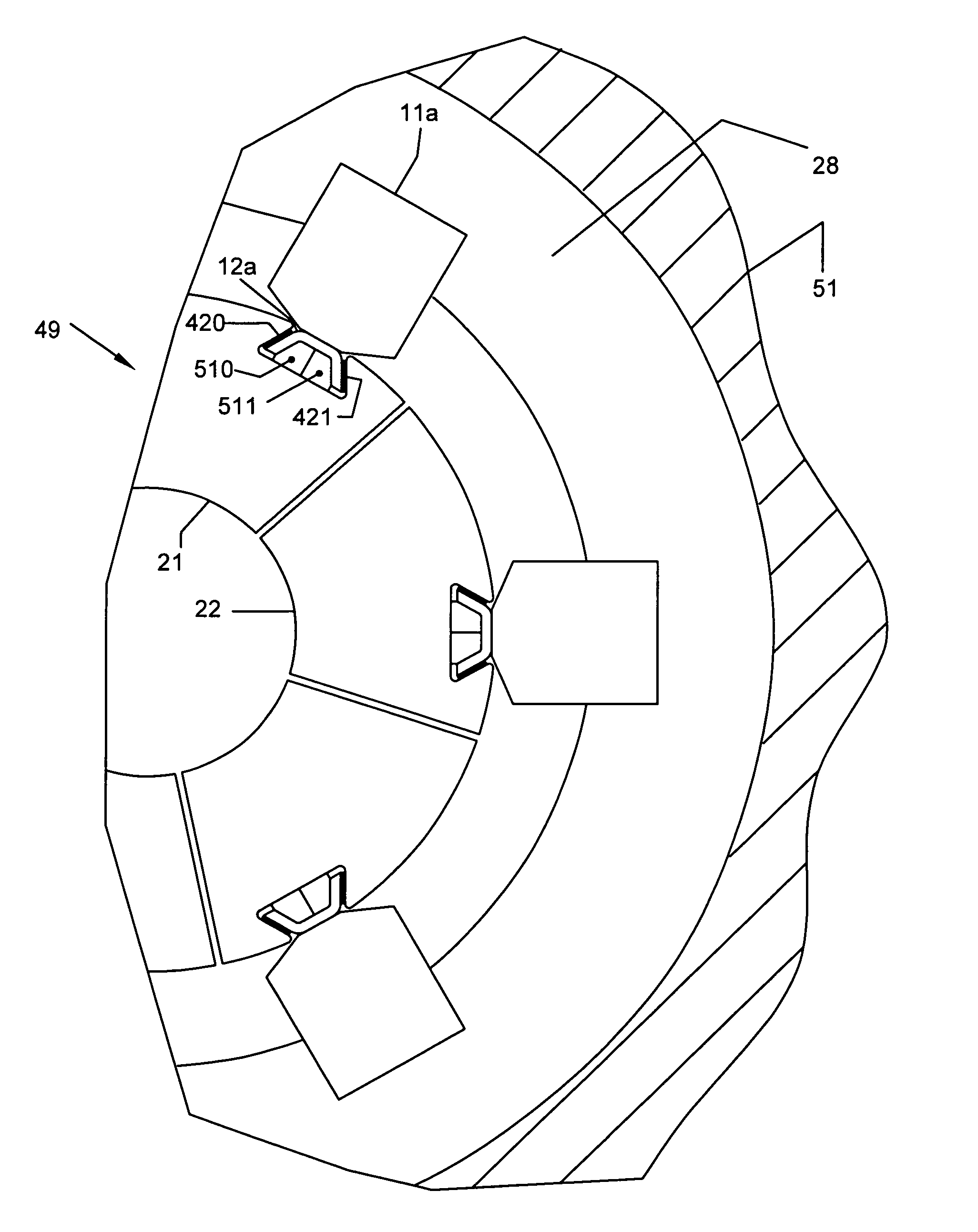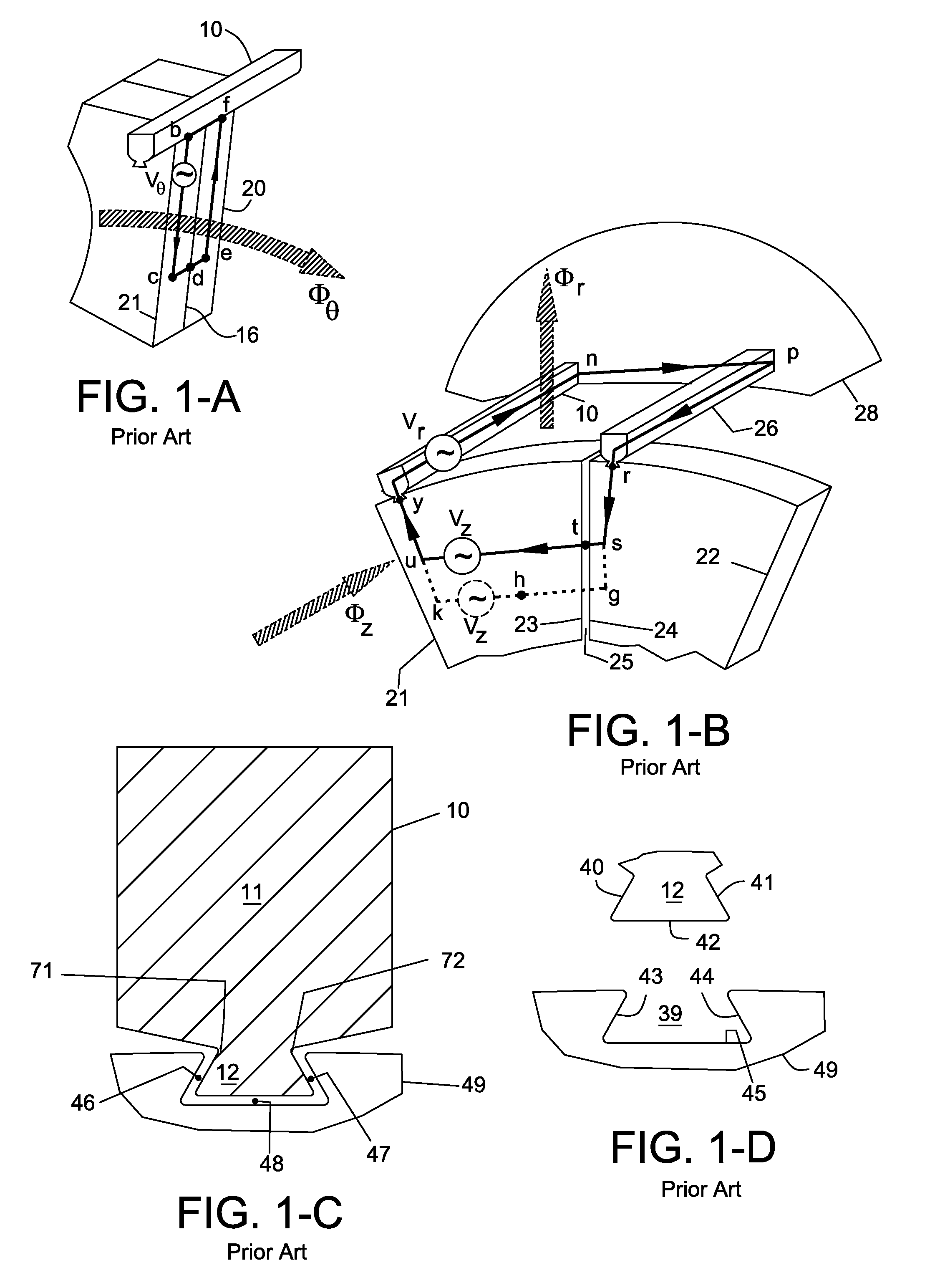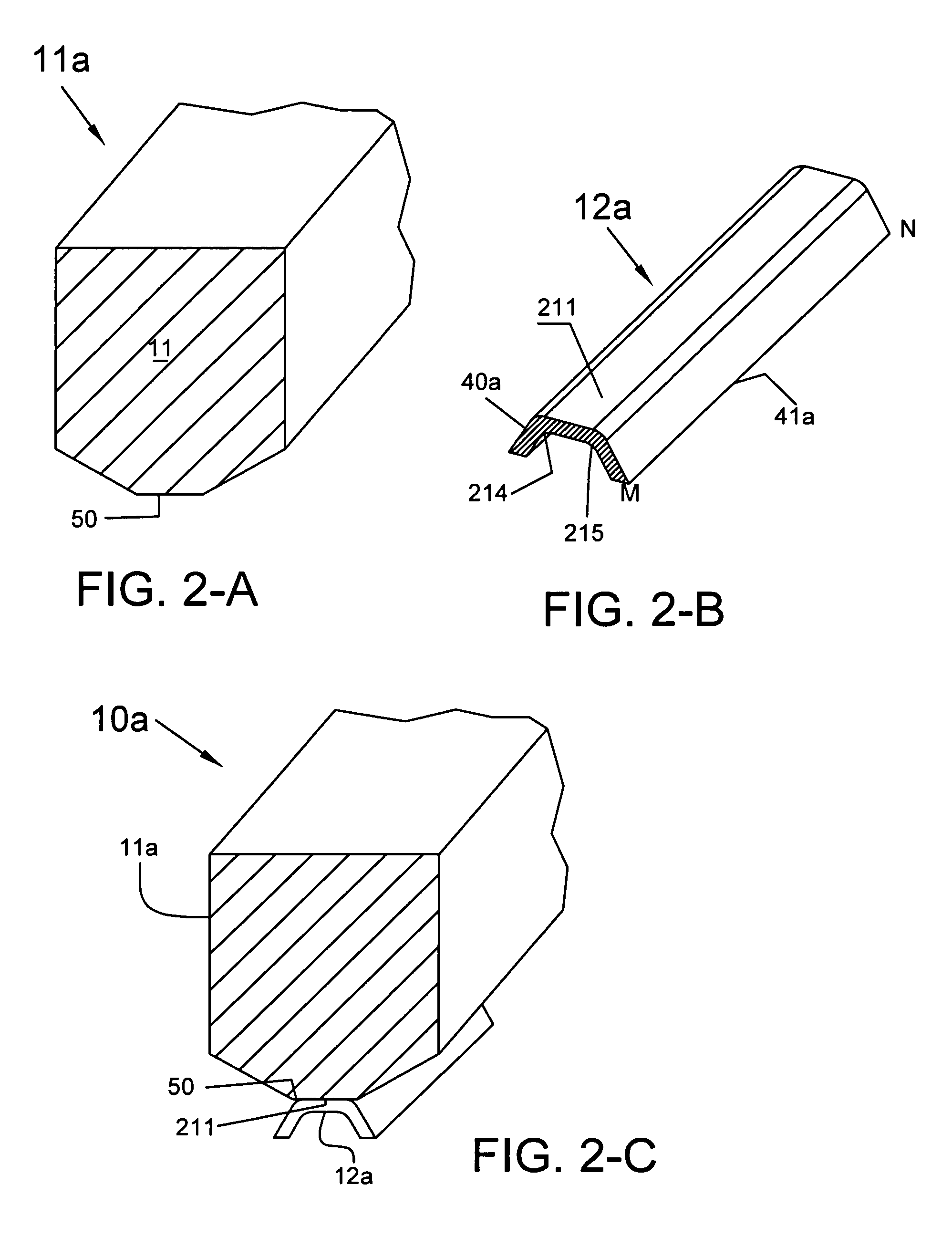Prevention of core failures in large electric machines
a technology of dynamoelectric machines and cores, which is applied in the direction of dynamo-electric machines, dynamo-electric machine testing, magnetic circuit shapes/forms/construction, etc., can solve the problem of no mechanism to remove this eddy heat from the coolant gas, localized heating and melting of the core, and the phenomenon known as a core failure, so as to prevent loose laminations from rattling, reduce the risk of core failure, and prevent large eddy curren
- Summary
- Abstract
- Description
- Claims
- Application Information
AI Technical Summary
Benefits of technology
Problems solved by technology
Method used
Image
Examples
Embodiment Construction
[0025]FIG. 2-A shows the bald keybar 11a to compress the core and transmit the loads from core to frame. It is a conventional keybar 10 without the dovetail 12 (see FIG. 1-C). Its size and shape is identical to the solid bolt portion 11 of the conventional keybar 10. It is made of same material and has threaded ends as in conventional keybar. A peripheral array of bald keybars 11a is secured to the frame 51 by welding to the support rings 28 and form a bald keybar cage as shown in FIG. 4. Bald keybar 11a has a narrow face 50 corresponding to the neck of the conventional keybar; this face is machined flat. Optionally machining of the face 50 can be done in-situ after the bald keybars are welded to the support ring, thereby avoiding any weld distortions affecting the flatness of faces 50 and roundness of array of bald keybars. Faces 50 of array of bald keybars could define a reference round surface for building the core. Since the bald keybar 11a has no dovetail, it is simpler and les...
PUM
 Login to View More
Login to View More Abstract
Description
Claims
Application Information
 Login to View More
Login to View More - R&D
- Intellectual Property
- Life Sciences
- Materials
- Tech Scout
- Unparalleled Data Quality
- Higher Quality Content
- 60% Fewer Hallucinations
Browse by: Latest US Patents, China's latest patents, Technical Efficacy Thesaurus, Application Domain, Technology Topic, Popular Technical Reports.
© 2025 PatSnap. All rights reserved.Legal|Privacy policy|Modern Slavery Act Transparency Statement|Sitemap|About US| Contact US: help@patsnap.com



